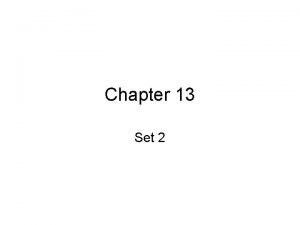Economic aspects of power generation Factors effecting the








- Slides: 8

Economic aspects of power generation

Factors effecting the cost of generation i) Diversity factor ii) Load curves iii) Load factor iv) Plant capacity factor v) Plant use factor

Diversity factor: Diversity factor = sum of consumers maximum demands maximum load on the station • When considering the installed capacity of the plant it is seldom necessary to choose the rating of plant to meet all the load at the same time for all loads connected to the station does not come simultaneously. A term commonly used in this connection is diversity factor

Load curves: • The load on a station is seldom steady ; it varies from time to time. The daily variations in load from time to time- hourly or half-hourly are given on load curve which shows graphically the variation of load with respect to time in chronological order. Much useful information can be obtained from a daily load curve. • (i) The area under the curve gives the number of units generated in the day. • (ii)The ratio of the area under the curve to the total area of rectangle in which it is contained gives the load factor for the day.

• (iii)The peak of the curve gives the simultaneous maximum demand on the station on that day. • (iv) The area under the curve divided by the no. of hours give the average demand on the station. • It may be mentioned that the daily load curve for a station is not the same for all days. It differs from dayto-day and season-to-season. It is in fact usual to draw two typical load curves-one for summer and another for winter – and base the annual output figures for the station on these curves.

• Load factor = Average demand Maximum demand =Energy generated in a given period (Max. demand)(Hours of operation in the given period) Power capacity factor: = Actual Energy produced Max possible energy that could have been produced( based on installed plant capacity)

• Plant Use factor : = Actual energy produced Plant Capacity * Time(hours)the plant has been in operation The ideal conditions for cheap electric supply: i) The installed capacity and hence the corresponding capital cost of the plant is kept low ii) the daily output of each generating unit is large (which means a good load factor) the reduction in cost with good load factor is due to the fact that the overall working cost per unit become low

Curves useful in system operation:
 Factors that affect the equilibrium
Factors that affect the equilibrium What are the factors affecting communication
What are the factors affecting communication Factors affecting the climate change
Factors affecting the climate change Which factors affecting solubility
Which factors affecting solubility Factors effecting gfr
Factors effecting gfr Thailand bride price
Thailand bride price Economic aspects of applied plant anatomy
Economic aspects of applied plant anatomy Second generation vs first generation antipsychotics
Second generation vs first generation antipsychotics Lord you are good and your mercy
Lord you are good and your mercy















